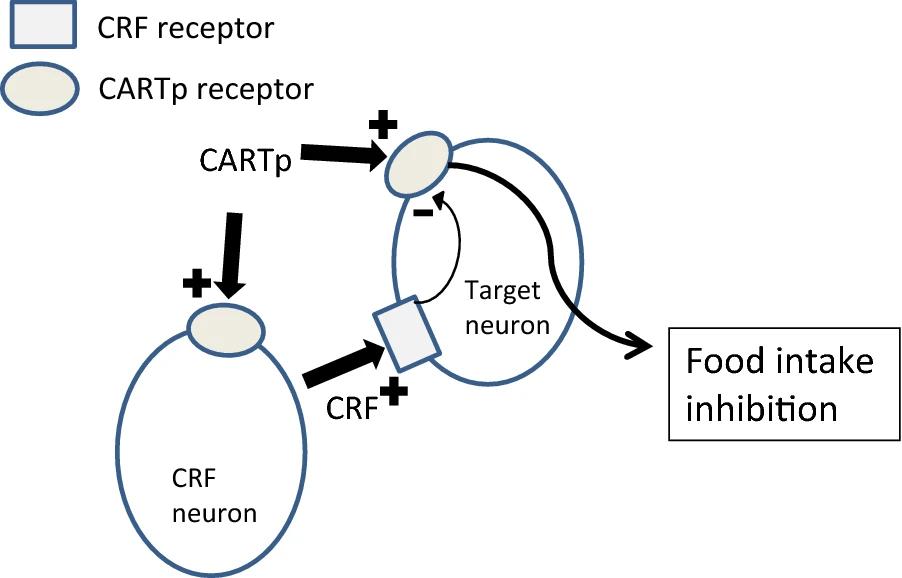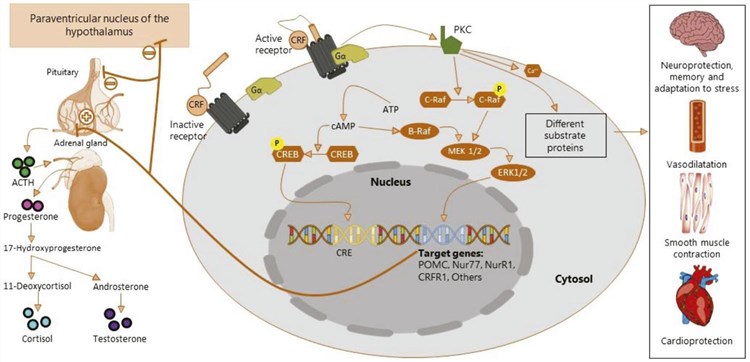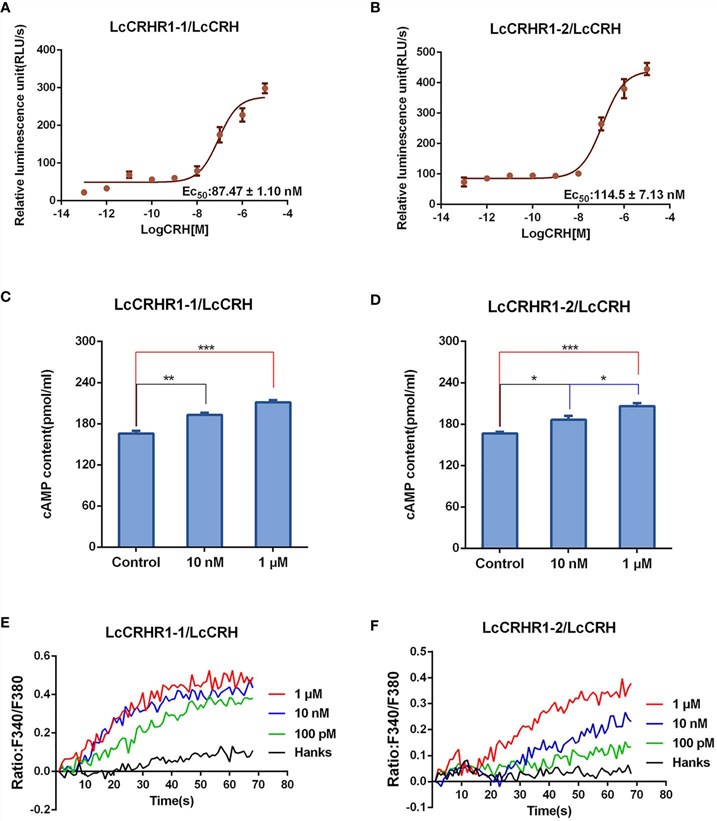Hi-Affi™ In Vitro Cell based CRF Receptor Functional Assay Service
CRF Receptors Overview
Corticotropin-releasing factor (CRF) receptors are members of the G-protein-coupled receptor superfamily as well as the gut-brain neuropeptide receptor family. CRF1 and CRF2 are two CRF receptor subtypes that control stress and immunological responses in the brain. Several studies have shown that CRF receptors play a crucial role in the regulation of the endocrine and behavioral responses to stress. Therefore, it's necessary to fully understand the function mechanisms of CRF receptors.
 Fig.1 A mechanism for CARTp–CRF receptor interactions to affect feeding.1
Fig.1 A mechanism for CARTp–CRF receptor interactions to affect feeding.1
Our Hi-Affi™ In Vitro Cell-based CRF Receptor Functional Assay Service
As a pioneer in the field of GPCR function research, Creative Biolabs provides a cost-effective Hi-Affi™ in vitro cell-based CRF receptor functional assay service to aid in identifying the function mechanism of CRF receptors.
In our Hi-Affi™ in vitro cell-based CRF receptor functional assay service, we measure the calcium flux and cAMP concentration. When a ligand binds to a CRF receptor, it activates a G protein, which subsequently stimulates intracellular calcium mobilization and cAMP release, consequently activating downstream signaling pathways. This assay allows us to test compounds, as well as analyze their capability to modulate CRF receptors and downstream signaling pathways. Together with our professional and experienced experts, we have more confidence in presenting the ideal results for each customer. A full range of services can be provided in order to advance global customers' projects smoothly, and we are capable of helping our customers to:
- Design experiments
- Choose the best analytical methodology
- Develop and validate the specific assay(s)
 Fig.2 The signaling pathway of CRF receptors.2
Fig.2 The signaling pathway of CRF receptors.2
Our Highlight Features
- A Broad Spectrum of Cell Types
- Rapid Timelines
- Experienced professional scientists
- Integrated bespoke services
Case Study
Case 2: Functional characterization of two corticotropin-releasing hormone receptors in Larimichthys crocea
Methods: In HEK293 cells, the membrane location of the fusions expressing LcCRHR1-1-EGFP and LcCRHR1-2-EGFP was identified. The researchers utilized ELISA to quantify the concentrations of cAMP. The intracellular calcium flow was quantified in 60 seconds using a fluorescence spectrometer by determining the ratio of excitation wavelengths at 340 nm and 380 nm.
Results: Treatment with LcCRH may lead to the internalization of two receptors. Additionally, there is a significant increase in the levels of secondary messengers (cAMP and Ca2+), as well as mitogen-activated protein kinase phosphorylation. These effects are observed in a dose-dependent manner with LcCRH.
 Fig.3 Functional characteristics of LcCRHR1s.3
Fig.3 Functional characteristics of LcCRHR1s.3
Work with Creative Biolabs

Creative Biolabs is continually optimizing and inventing in the area of GPCR functional identification, as well as is devoted to providing the best results for every customer. Simultaneously, we provide related tests to aid in the identification of GPCR function.
Feel free to get in touch with us to learn more about our Hi-Affi™ in vitro cell-based CRF receptor functional assay service. Our team is excited to begin collaborating with you.
References
-
Smedh, Ulrika, et al. "Pretreatment with a CRF antagonist amplifies feeding inhibition induced by fourth ventricular cocaine-and amphetamine-regulated transcript peptide." BMC Neuroscience 20.1 (2019): 1-7.
Distributed under Open Access License CC BY 4.0, without modification. -
Vasconcelos, Mailton, et al. "Corticotropin-releasing factor receptor signaling and modulation: implications for stress response and resilience." Trends in psychiatry and psychotherapy 42 (2020): 195-206.
Distributed under Open Access License CC BY 4.0, without modification. -
Liu, Xue, et al. "Functional characterization of two corticotropin-releasing hormone receptors in Larimichthys crocea." Frontiers in Marine Science 10 (2023): 1184792.
Distributed under Open Access License CC BY 4.0, without modification.
For Research Use Only.
